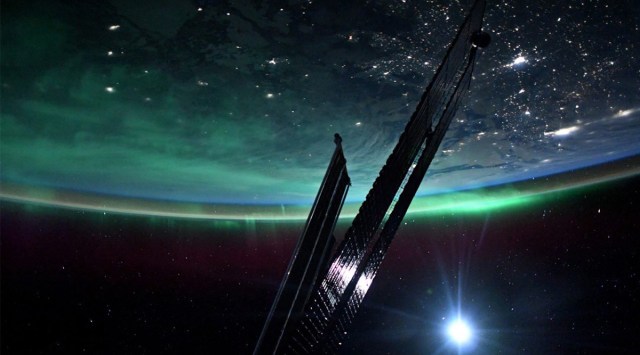A hole in the Sun’s atmosphere could produce dazzling auroras in March
A coronal hole could augment stunning auroras between March 23 and March 25.
 This picture of the aurora borealis was taken from the International Space Station by NASA astronaut Josh Cassada. (Image credit: Josh Cassada / Twitter)
This picture of the aurora borealis was taken from the International Space Station by NASA astronaut Josh Cassada. (Image credit: Josh Cassada / Twitter) A hole in the Sun’s corona, which is part of the star’s atmosphere, could lead to dazzling auroras on Earth between March 23 and March 25 according to reports.
According to a Space.com report, the US National Oceanic and Atmospheric Administration (NOAAA) put in an aurora watch alert for Friday, March 24 for the higher latitudes of the planet due to a coronal hole, or a hole in the Sun’s magnetic field.
While NOAA has taken down the link referenced by the publication, its space weather prediction centre has put in geomagnetic storm watch alerts in effect for the time between March 23 and March 25.
According to it, the alert has been put into effect primarily because of the coronal hole, but it could also combine with a coronal mass ejection that happened on March 20 to produce geomagnetic storms on March 23.
Coronal holes are parts of the Sun’s corona that are cooler and less dense than the surrounding plasma. They are regions of open, unipolar magnetic fields. Their unique structure allows solar wind to escape more readily into space. This can cause streams of speedy solar winds that are referred to as “high-speed streams.”
When these charged particles that are part of these high-speed streams collide with our atmosphere, they sometimes produce the dazzling light shows in the sky that we call auroras.
Big thanks to the @easyJet pilot of EZY1806 from Reykjavik to Manchester who did a 360 fly by mid flight to make sure all passengers could see the incredible Northern Lights 🤩 pic.twitter.com/A4CHi9Hqgo
— Adam Groves (@APTGroves) February 27, 2023
Usually, you would have to go to distant parts of the world like Greenland, Norway, Sweden and Finland to see these auroras. Of course, you can also view them on the other side of the planet from locations like Tasmania in Australia and New Zealand.
But the kind of solar activity that causes these storms has been ramping up in recent times, according to the Weather Network. In February, this ramping up of solar activity meant that people were able to view auroras from locations where they wouldn’t have been visible otherwise, like the United Kingdom.







